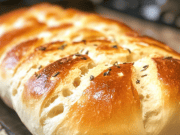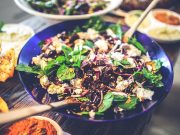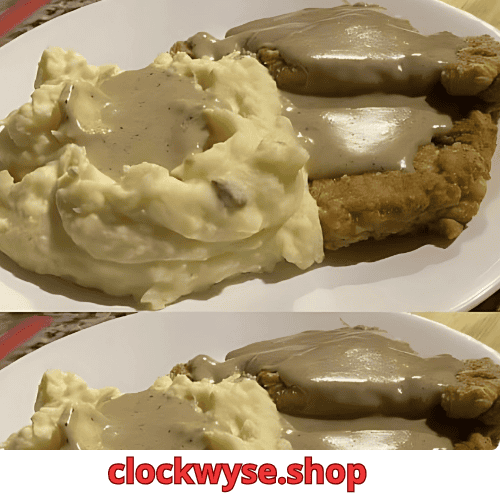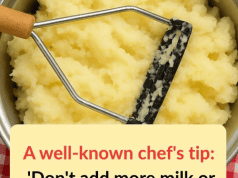The Secret to Perfect Mashed Potatoes: Why Boiling Might Be Ruining Your Mash (And What to Do Instead)
Mashed potatoes are a staple of comfort food — creamy, rich, and deeply satisfying.
But here’s a surprising truth:
Boiling your potatoes before mashing might actually be the reason yours turn out gluey, bland, or just not quite right.
While most recipes start with tossing cubed potatoes into a pot of water, chefs and food scientists alike have discovered that boiling can compromise texture and flavor in ways you might not expect.
Let’s uncover the secret behind the best mashed potatoes — and why steaming could be the game-changing technique you’ve been missing.
🥔 Why Boiling Can Be Your Worst Enemy
It seems counterintuitive — after all, potatoes are dense and starchy, so they need plenty of moisture to cook through, right?
Not exactly.
Here’s what happens when you boil:
- Potatoes absorb too much water , making them soggy and hard to mash smoothly
- Starch gets washed away into the cooking water, reducing creaminess
- Over-boiled potatoes become gummy or gluey , especially when over-mixed
- Nutrients like potassium and vitamin C leach into the water and down the drain
This is why even experienced home cooks sometimes end up with mashed potatoes that lack richness — or worse, feel heavy and dull.
🧄 The Better Way: Steaming – For Fluffier, Flavorful Results
Enter steaming , the underused method that professional chefs swear by for superior mashed potatoes.
Why Steaming Works Better:
- Retains natural moisture without oversaturation
- Preserves starch inside the potato for a creamier texture
- Keeps nutrients intact
- Prevents overcooking and breakdown
Steamed potatoes come out tender but dry — ready to soak up butter, milk, or cream without resistance.
✅ How to Steam Like a Pro:
- Cut potatoes into evenly sized pieces (about 1–2 inches)
- Place in a steaming basket above boiling water
- Cover and steam for 15–20 minutes until easily pierced with a fork
- Mash immediately with warm dairy for a silky finish
You’ll notice an immediate difference — lighter, richer, and more flavorful results.
🧑🍳 Step-by-Step: The Best Method for Making Mashed Potatoes
Ingredients:
- 2 lbs Yukon Gold or Russet potatoes
- ½ cup whole milk or cream
- 4 tbsp unsalted butter
- Salt to taste
- Optional: garlic, herbs, or cheese
Instructions:
1. Peel and Cut Evenly
Cutting uniform pieces ensures even cooking — no mushy edges or undercooked centers.
2. Steam Until Tender
Place in a steamer basket over boiling water. Cover and steam until soft (about 15–20 minutes).
3. Drain and Dry
Return to the empty pot and place over low heat for a minute or two — this removes excess moisture and prevents sogginess.
4. Add Warm Dairy Gradually
Warm your milk or cream and add it slowly while mashing or beating gently.
5. Season Generously
Salt enhances flavor — don’t be afraid to season thoughtfully.
6. Mix Gently
Use a potato masher, ricer, or hand mixer. Avoid overworking the potatoes — that’s how you get gummy mash.
7. Taste and Adjust
If it needs more richness, add a bit more butter or cream. If it’s dry, stir in a splash of warm milk.
🧪 The Science Behind the Silky Smooth Mash
When you boil, you force the potato cells to swell with water — which dilutes their flavor and makes them prone to absorbing too much liquid.
Steaming allows the cells to soften without becoming saturated — preserving their structure and starch content.
This means better:
- Texture – smoother and fluffier
- Flavor – less diluted, more potato-forward
- Consistency – easier to control thickness and moisture
Even the pros agree:
“The key to great mashed potatoes isn’t in the butter — it’s in the cooking method,” says Chef Michaela Lin, author of From Farm to Fork .
“Steaming gives you control. You’re not fighting waterlogged spuds — you’re working with them.”
🍽️ Final Thoughts: Don’t Let Water Ruin Your Comfort Food
Boiling may seem like the only way to cook potatoes — but when it comes to mashed potatoes, it’s often the root of the problem.
By switching to steaming, you gain control, preserve flavor, and ensure a better mouthfeel every time.
So next time you’re preparing dinner or planning a holiday meal…
Don’t just follow tradition.
Follow science.
Because the best mashed potatoes aren’t made with water.
They’re made with intention.
And the proof is in the fluff.






















